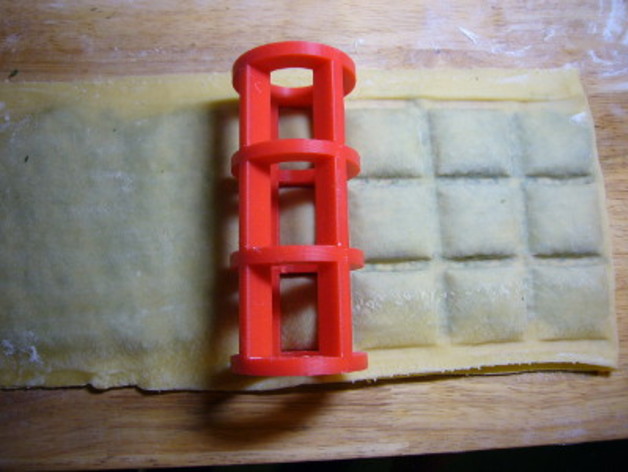
Ravioli Pin
thingiverse
A humble pin may suffice. Instructions Wooden Ravioli Pin Unlike its counterparts, this pin is merely a simple cage with no inner workings. Still, it performs admirably well. First, I roll out the pasta sheet and place it flat. Then, I evenly distribute a layer of filling across its surface. Afterward, another sheet is placed on top, and the whole assembly is rolled up tight. The thickness of my ravioli is entirely dependent on how generously I spread that initial layer of filling. In no way does the pin's cavity depth, or rather, lack thereof, have any impact on this parameter. The traditional wooden pins, with their ornate curved design, are, in all likelihood, simply the result of a designer's artistic expression. These wooden elements serve as supports and do the real work of pressing out uniform ravioli. Other manufacturers replicate these designs without giving much thought to what is truly necessary. As far as I am concerned, however, the intricate interior curves are not strictly required. The provided STL file for the pin varies from the design depicted in the photograph that highlights it. In the image, the divider thickness is somewhat too thin, leading to inadequate spacing between the ravioli pieces. On occasion, this narrow margin causes issues during the cutting process as filling sometimes gets accidentally sliced. A more substantial border, roughly twice as wide, provides better separation between the ravioli using a standard pasta-making wheel. I much prefer this wider configuration. As you run the dough through a typical pasta machine, you should be able to produce ravioli that stack 3-high in neat rows. These finished ravioli measure approximately 1 inch by 5 inches wide after removal from the pin but do grow once cooked to around 1 and a half or possibly even two square inches. It takes roughly two hours and thirty minutes, with 80 grams of ABS plastic being used, if you choose to use layers no less than 0.35mm thickness. During printing on an Afinia device, supports remain firmly in place but can be effortlessly removed once completed. If, for whatever reason, the idea of utilizing printed objects or plastics that may not conform to standard food safety standards causes any hesitation, please feel at ease in skipping over this project entirely.
With this file you will be able to print Ravioli Pin with your 3D printer. Click on the button and save the file on your computer to work, edit or customize your design. You can also find more 3D designs for printers on Ravioli Pin.
